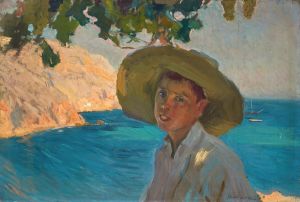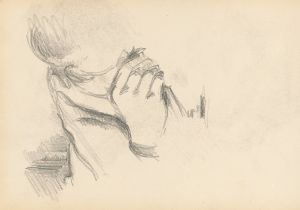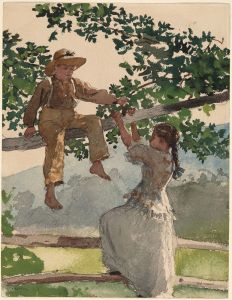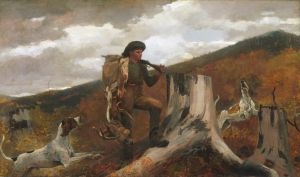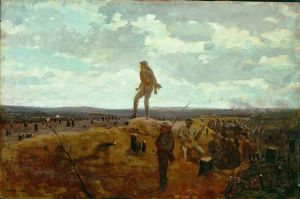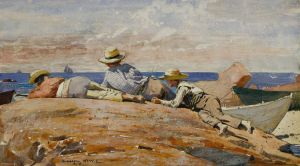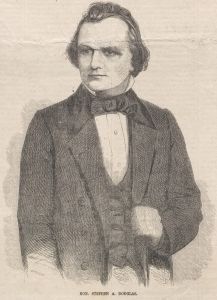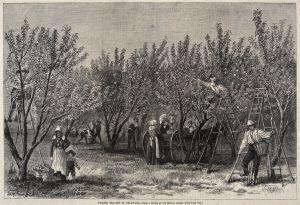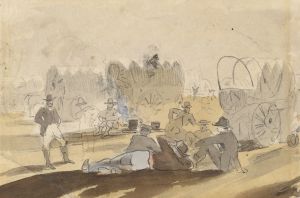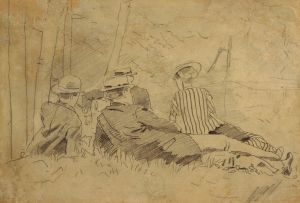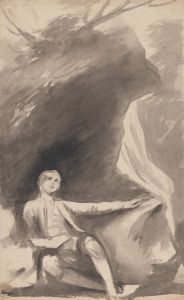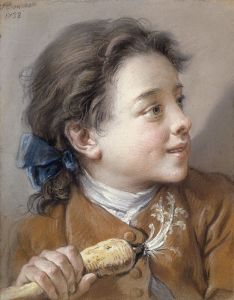
Boy with Anchor
A hand-painted replica of Winslow Homer’s masterpiece Boy with Anchor, meticulously crafted by professional artists to capture the true essence of the original. Each piece is created with museum-quality canvas and rare mineral pigments, carefully painted by experienced artists with delicate brushstrokes and rich, layered colors to perfectly recreate the texture of the original artwork. Unlike machine-printed reproductions, this hand-painted version brings the painting to life, infused with the artist’s emotions and skill in every stroke. Whether for personal collection or home decoration, it instantly elevates the artistic atmosphere of any space.
Winslow Homer, an American painter renowned for his marine subjects, created the painting "Boy with Anchor" in 1873. This work is a watercolor, a medium Homer frequently employed during his career, especially in the 1870s when he began to explore the possibilities of watercolor more extensively. "Boy with Anchor" is part of Homer's exploration of themes related to the sea and the people who lived and worked near it.
The painting depicts a young boy holding an anchor, a symbol often associated with maritime life and stability. The boy is dressed in typical 19th-century attire, which reflects the everyday life of children during that period. Homer's choice to portray a boy with an anchor may suggest themes of youth, innocence, and the connection between humans and the sea. The anchor itself is a powerful maritime symbol, representing hope and steadfastness, which might imply a deeper narrative or emotional resonance within the painting.
Homer's work during this period often focused on the lives of ordinary people and their interactions with the natural world. His paintings are celebrated for their realistic portrayal and the emotional depth they convey. "Boy with Anchor" is no exception, as it captures a moment that is both specific and universal, inviting viewers to ponder the relationship between the boy and the maritime world he inhabits.
The watercolor technique used in "Boy with Anchor" allows for a fluidity and lightness that is characteristic of Homer's work in this medium. Watercolors enabled Homer to capture the transient effects of light and atmosphere, which are crucial elements in his seascapes and coastal scenes. The medium also allowed for a spontaneity and immediacy that suited Homer's approach to capturing the essence of his subjects.
Homer's interest in maritime themes was influenced by his time spent in coastal areas, particularly in New England. His experiences in these regions provided him with a wealth of inspiration and subject matter. The sea, with its ever-changing moods and its impact on human life, became a central theme in his work. "Boy with Anchor" fits within this broader context of Homer's oeuvre, reflecting his fascination with the sea and its influence on those who live by it.
Throughout his career, Winslow Homer remained a pivotal figure in American art, known for his ability to depict the American experience with authenticity and depth. His works continue to be studied and admired for their technical skill and their ability to convey complex themes through seemingly simple subjects. "Boy with Anchor" is a testament to Homer's mastery of watercolor and his enduring interest in the interplay between humanity and the natural world.
Today, "Boy with Anchor" is part of the collection at the Brooklyn Museum, where it contributes to the understanding of Homer's artistic legacy and the broader context of 19th-century American art. The painting remains a significant example of Homer's work and continues to be appreciated for its artistic merit and historical significance.





